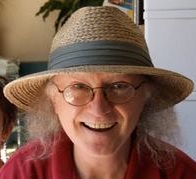2.2: Oxidation vs Reduction in Metabolism
- Page ID
- 1705
Biochemical processes that break things down from larger to smaller are called catabolic processes. Catabolic processes are often oxidative in nature and energy releasing. Some, but not all of that energy is captured as ATP. If not all of the energy is captured as ATP, what happens to the rest of it? The answer is simple. It is released as heat and it is for this reason that we get hot when we exercise. By contrast, synthesizing large molecules from smaller ones (for example, making proteins from amino acids) is referred to as anabolism. Anabolic processes are often reductive in nature and require energy input. By themselves, they would not occur, as they are reversing oxidation and decreasing entropy (making many small things into a larger one). To overcome this energy ‘barrier’, cells must expend energy. For example, if one wishes to reduce CO2 to carbohydrate, energy must be used to do so. Plants do this during the dark reactions of photosynthesis. The energy source for the reduction is ultimately the sun. The electrons for the reduction ultimately come from water, and the CO2 comes from the atmosphere and gets incorporated into a sugar.


Dr. Kevin Ahern and Dr. Indira Rajagopal (Oregon State University)


